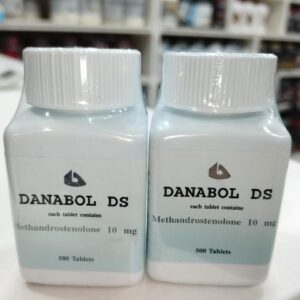Understanding Humatrope: The Human Growth Hormone for Growth Failure
What is Humatrope?
Humatrope is a synthetic form of human growth hormone (HGH) produced through recombinant DNA technology. It replicates the natural growth hormone secreted by the pituitary gland, which plays a critical role in several physiological processes, including growth, metabolism, and cellular regeneration. The primary chemical structure of Humatrope is identical to that of the endogenous hormone, consisting of a chain of 191 amino acids, which enables it to function effectively within the body.
This biologically active form of HGH is vital for the development of bones, muscles, and tissues in children and adolescents. Moreover, in adults, it contributes to the maintenance of body composition, energy levels, and metabolic functions. Humatrope mimics the actions of natural growth hormone by binding to specific receptors on target cells, stimulating growth and metabolic activities, thereby promoting an overall balance in the body’s physiological state.
Humatrope is classified as a prescription medication, which indicates that it has undergone rigorous testing and evaluation by health authorities, such as the U.S. Food and Drug Administration (FDA). It is primarily prescribed for the treatment of growth failure due to various medical conditions, including growth hormone deficiency and chronic kidney disease in children. Additionally, it is utilized in certain cases for adults who exhibit severe growth hormone deficiencies.
The therapeutic use of Humatrope is closely monitored, ensuring that it is administered under the guidance of healthcare professionals. Proper dosage and administration are essential to maximize its benefits while minimizing potential side effects associated with growth hormone therapy. Overall, Humatrope serves as a vital resource in managing growth-related disorders and enhancing the quality of life for individuals experiencing growth failure.
Humatrope Indications for Use
Humatrope is a recombinant form of human growth hormone (HGH) that plays a crucial role in stimulating growth and development in children and adults with specific medical conditions leading to growth failure. One of the primary indications for the use of Humatrope is Turner syndrome, a genetic disorder affecting females characterized by the absence of one X chromosome, which can result in a range of developmental issues, including short stature. The administration of Humatrope in these patients helps enhance growth hormone levels and promotes more typical growth patterns, potentially improving overall quality of life.
Another significant indication for Humatrope therapy is short stature at birth accompanied by inadequate catch-up growth. Infants who fall short of expected growth rates but do not show a natural growth spurt may benefit from Humatrope treatment. This treatment aims to rectify growth deficiencies by mimicking the natural action of growth hormone in the body, thus encouraging healthy physical developments that were previously lacking.
Idiopathic short stature (ISS) also presents an important indication for Humatrope prescription. This condition refers to children who are shorter than their peers with no identifiable medical explanation for their short stature. The application of Humatrope in such cases provides a vital intervention, as it can stimulate linear growth and help these children reach a height more aligned with their peers. By targeting growth hormone deficiency and its ramifications on physical development, Humatrope demonstrates significant efficacy across various growth-related conditions. Overall, the reasoning behind utilizing Humatrope as a treatment is based on its ability to address the underlying hormonal imbalances contributing to growth failure, thereby facilitating improved outcomes for affected individuals.
Humatrope Mechanism of Action
Humatrope, a recombinant form of human growth hormone (HGH), plays a significant role in promoting growth and development in children and adolescents who experience growth failure due to insufficient endogenous growth hormone secretion. The primary mechanism of action of Humatrope involves stimulating the liver and various tissues to produce insulin-like growth factor 1 (IGF-1), a hormone that is critical for growth promotion and anabolic processes in the body.
Once administered, Humatrope enhances the production of IGF-1, which subsequently leads to increased chondrocyte proliferation and differentiation in the growth plates of long bones, thus facilitating linear bone growth. This action is particularly vital during the prepubertal phase of development when significant skeletal growth occurs. Additionally, Humatrope fosters muscle growth by stimulating protein synthesis and decreasing protein catabolism, leading to an increase in lean body mass. Through these processes, Humatrope ensures that not only height but also overall body composition is improved in individuals experiencing growth deficiencies.
Moreover, Humatrope affects lipid metabolism by promoting lipolysis, which is the breakdown of fats into free fatty acids. This results in a reduction of body fat composition and improves the body’s metabolic profile, thus encouraging a healthier overall physical state. By understanding the intricate mechanisms through which Humatrope operates, physicians can better tailor treatment plans to meet the individual needs of patients. Patients, in turn, gain insight into how the treatment not only targets growth deficiencies but also contributes to overall health and well-being.
Administration and Dosage Guidelines
Humatrope, a form of human growth hormone, is administered via subcutaneous injection. This method allows for direct delivery of the hormone into the fatty tissue just beneath the skin, promoting effective absorption. Patients or caregivers can be trained to self-administer Humatrope after consultation with healthcare professionals, ensuring proper technique and hygiene are observed. The injection is typically done once daily, with the exact timing of the injection being less critical as long as it is administered consistently at the same time every day.
In terms of dosage, it is essential to refer to physician recommendations tailored specifically to the individual patient’s needs. Recommended dosages vary based on several factors, including the patient’s age, weight, and the underlying medical condition being treated. For children experiencing growth failure due to various causes, typical dosage might start with 0.2 to 0.3 mg/kg of body weight per week, but healthcare providers usually adjust this as the treatment progresses. For adults, the dosage guidelines differ, and a common range is 0.1 to 0.3 mg taken three to six times per week.
Adherence to prescribed dosages is crucial for achieving the desired therapeutic outcomes. Suboptimal dosing can lead to insufficient growth or may increase the risk of side effects. Therefore, regular monitoring by healthcare professionals is vital. They assess progress through clinical evaluations, tracking growth patterns in children or evaluating body composition and overall health in adults. Regular follow-up appointments allow for timely adjustments to the treatment protocol, ensuring that patients receive the optimal benefit of Humatrope therapy.
Potential Side Effects and Considerations
Humatrope, a form of human growth hormone, is commonly prescribed for growth failure in children and certain medical conditions in adults. However, the use of Humatrope therapy is not without risks and potential side effects. The most frequently reported adverse effects include headaches, joint pain, and swelling at the injection site. These symptoms are typically mild and may subside as the body adjusts to the treatment. However, some patients may experience more serious side effects that require immediate medical attention.
Serious adverse effects associated with Humatrope can include increased intracranial pressure, which manifests as severe headaches, visual disturbances, or nausea. Additionally, there is a risk of developing diabetes mellitus, as the hormone can affect glucose metabolism. Patients may also experience muscle pain or numbness, particularly if they have pre-existing conditions such as diabetes or hypothyroidism. It is critical for individuals undergoing Humatrope therapy to be monitored closely by healthcare professionals to identify and address these potential issues promptly.
Moreover, interacting medications can complicate the therapy process. It is essential for patients to provide their healthcare providers with a comprehensive list of all medications, supplements, and over-the-counter drugs they are currently taking. This allows for a better understanding of potential interactions that could increase the risk of adverse effects. Regular consultations with a healthcare professional are essential to ensure optimal treatment efficacy and safety.
In conclusion, while Humatrope can effectively address growth failure, its use necessitates careful consideration of potential side effects. Continuous medical supervision, open communication regarding concomitant medications, and awareness of any developing symptoms are crucial factors in the safe management of therapy with Humatrope.






